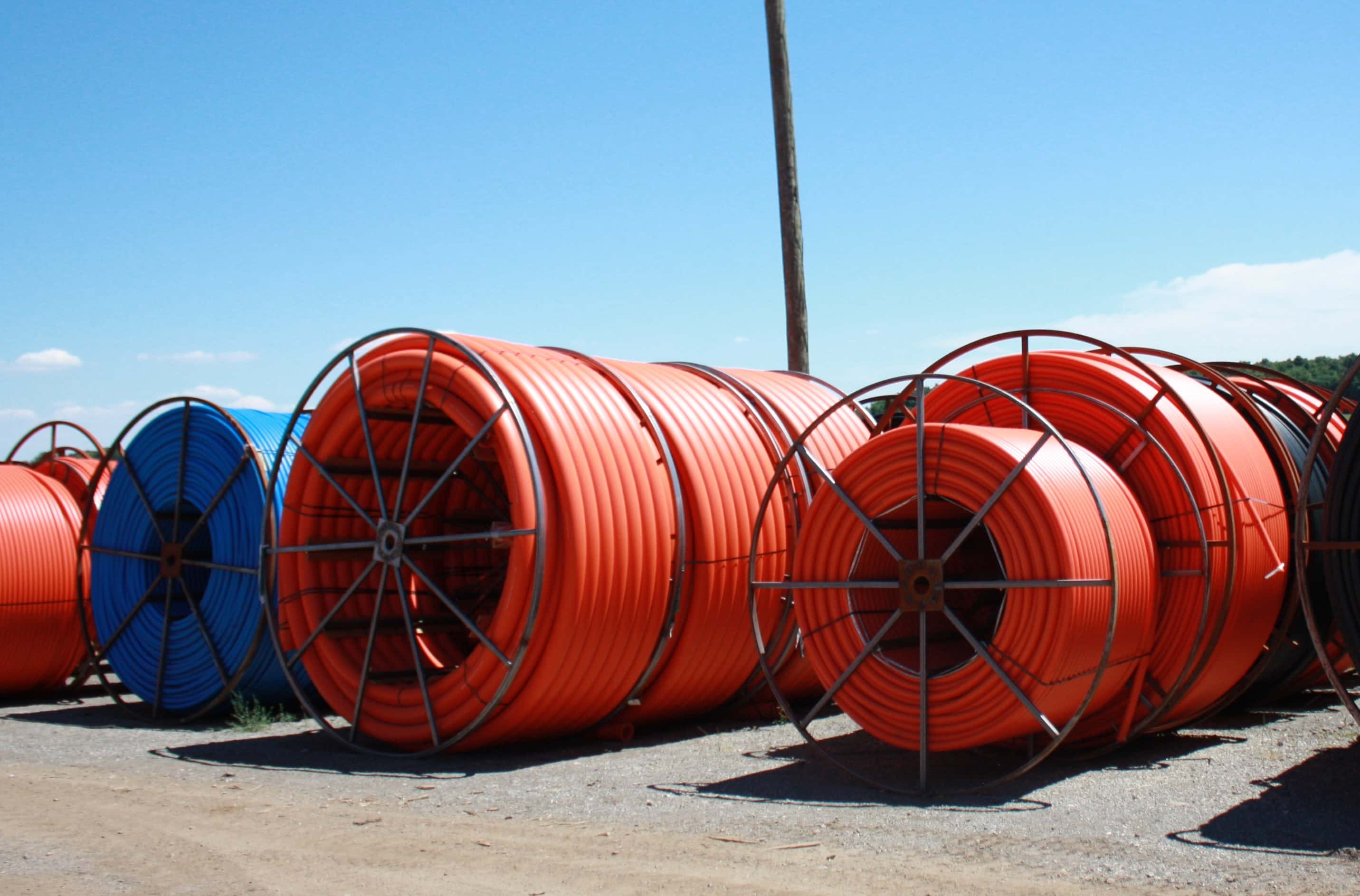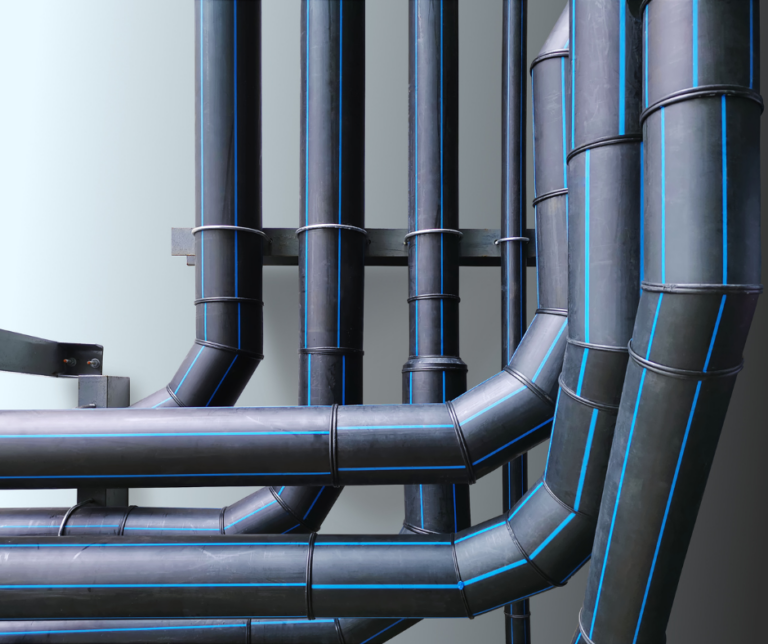hdpe pipe suppliers Midland TX: Checklist for Contractors
Wiki Article
Explore the Manufacturing Refine Behind High-Quality HDPE Pipe and Its Applications
The production process of premium HDPE pipes is elaborate and methodical. It begins with the choice of resources that enhance efficiency. Following this, ethylene undertakes polymerization to develop material, which is after that shaped with extrusion. Quality assurance is vital, ensuring that the last item fulfills stringent standards. However, the trip of HDPE pipelines does not finish with production. Their applications across various sectors expose a more comprehensive value worth examining.Understanding HDPE: Residences and Advantages

High-density polyethylene (HDPE) is a versatile thermoplastic understood for its toughness and resistance to different environmental elements. This product exhibits exceptional tensile stamina, making it suitable for demanding applications. Its low-density framework adds to a lightweight item, helping with ease of taking care of and setup. HDPE likewise showcases amazing resistance to chemicals, which reduces degradation when subjected to rough compounds.
The material's reduced dampness absorption better improves its longevity, making it ideal for usage in pipelines and storage tanks. In addition, HDPE is resistant to ultraviolet (UV) radiation, guaranteeing that items keep their honesty also when revealed to sunlight. Moreover, its adaptability permits the creation of intricate forms without jeopardizing toughness. The environmentally friendly nature of HDPE, frequently acquired from recycled products, includes in its appeal, advertising sustainable practices in production. Generally, these buildings and advantages make HDPE a favored choice for different commercial and customer applications.
Raw Material Option for HDPE Manufacturing
The selection of basic materials for HDPE production is vital to confirm the last item satisfies the wanted specifications and top quality criteria. High-density polyethylene (HDPE) is largely produced from polymerized ethylene, originated from nonrenewable fuel sources such as all-natural gas or unrefined oil. The high quality of these feedstocks greatly affects the mechanical and thermal buildings of the final HDPE.Additives also play a significant function in boosting HDPE's efficiency, consisting of anti-oxidants, UV stabilizers, and colorants, which enhance longevity and resistance to ecological factors. The selection process need to consider not just the chemical structure of the raw materials but also their processing features to assure reliable production.
Furthermore, the sourcing of raw products ought to focus on sustainability and conformity with environmental guidelines, as responsible practices are essential in today's market. Eventually, careful basic material selection lays the foundation for creating top quality HDPE pipelines ideal for varied applications.
The Extrusion Process: Forming HDPE Pipe
The extrusion process plays a crucial role fit HDPE pipelines, starting with careful material prep work techniques that guarantee suitable flow and uniformity. Similarly vital is the layout of the die, which directly affects the final dimensions and surface quality of the pipe. Together, these elements contribute significantly to the performance and top quality of HDPE pipe manufacturing.Material Preparation Strategies
Effective production of HDPE pipes starts with careful product preparation techniques, especially the extrusion procedure. During this stage, high-density polyethylene material is very first dried out to eliminate wetness, making certain ideal circulation qualities. The material is then fed right into the extruder, where it undergoes heating and melting, changing into a thick state. This heating process is carefully regulated to preserve the product's integrity and efficiency. The molten HDPE is compelled via a die, shaping it into a continuous pipeline kind. Proper temperature management throughout extrusion is important, as it straight impacts the product's buildings and the end product quality. When formed, the HDPE pipeline is cooled and cut to specified sizes, all set for succeeding handling and applications.Die Layout Relevance
Accuracy in die layout plays an important function in the extrusion procedure of HDPE pipelines. The die serves as the final shaping device, straight affecting the pipe's measurements, wall surface density, and surface area coating. A properly designed die assurances consistent material circulation, lowering problems such as abnormalities and vulnerable points. The geometry of the die need to be enhanced to fit the specific residential properties of HDPE, including its thickness and thermal behavior during extrusion. Furthermore, the cooling rate of the product as it goes through the die can significantly impact the pipeline's architectural integrity. Subsequently, purchasing sophisticated die technology is vital for suppliers aiming to produce top quality HDPE pipes that fulfill market standards and client expectations.Quality Assurance Measures in HDPE Manufacturing
Numerous factors influence the top quality of HDPE pipeline production, reliable quality control steps are critical to guarantee uniformity and dependability in the final product (Pipe Manufacturing Midland TX). Key top quality control practices consist of strenuous product assessment, verifying that the raw polyethylene fulfills well established standards for pureness and thickness. During look what i found the extrusion process, parameters such as temperature level, stress, and cooling time are carefully checked to keep dimensional accuracy and architectural integrityFurthermore, post-production testing is important; suppliers usually carry out hydrostatic examinations to assess the pipeline's stamina and resistance to pressure. Visual assessments for surface issues better improve quality control. Certification from relevant requirements companies, like ASTM or ISO, gives an added layer of reputation. By applying these complete top quality control measures, suppliers can minimize problems, improve efficiency, and make sure that the HDPE pipes fulfill the particular requirements of different applications, inevitably leading to customer contentment and rely on the product.
Applications of HDPE Pipe Across Industries
HDPE pipelines are made use of across numerous industries as a result of their toughness and flexibility. In water circulation systems, they guarantee effective distribution, while in wastewater administration, they supply reputable options for waste transport. In addition, agricultural watering networks take advantage of HDPE's resistance to corrosion and versatility, making it a suitable choice for contemporary farming methods.sites

Water Distribution Solutions
A substantial number of sectors count on high-density polyethylene (HDPE) pipelines for effective water circulation systems. Known for their durability and resistance to deterioration, HDPE pipes are commonly utilized in metropolitan water networks, farming irrigation, and commercial applications. Their lightweight nature assists in easy handling and installation, lowering labor prices and time. Additionally, HDPE pipes can fit numerous stress levels, making them appropriate for both low and high-pressure systems. Pipe Supplier American Plastics Midland. The versatility of the product enables smooth assimilation into existing facilities, reducing the requirement for considerable excavation. Additionally, HDPE's resistance to chemical leaching guarantees that the water provided remains safe and clean, making it a perfect choice for maintaining the top quality of drinkable water throughout different industriesWastewater Administration Solutions
Effective water circulation systems also pave the means for ingenious wastewater management options, where high-density polyethylene (HDPE) pipes play a substantial role. Distinguished for their durability and resistance to deterioration, HDPE pipes are ideal for moving wastewater in different setups. Their versatility permits simple installment in intricate settings, decreasing the demand for extensive excavation. In addition, HDPE's smooth indoor surface area decreases rubbing, improving circulation rates and effectiveness. These pipes are likewise immune to chemical leaching, making certain that impurities do not endanger the surrounding atmosphere. Industries, municipalities, and therapy facilities increasingly count on HDPE pipes for their reliability and durability, making them a recommended choice for modern-day wastewater administration systems. This adaptability emphasizes the critical importance of HDPE pipes throughout various applications.Agricultural Watering Networks
Agricultural watering networks profit considerably from the use of high-density polyethylene (HDPE) pipelines, which offer reliable and reputable water delivery to crops. HDPE pipes are light-weight, making them very easy to transfer and set up, while their adaptability permits different setups in diverse terrains. These pipes show excellent resistance to corrosion, chemicals, and UV radiation, making sure durability in rough agricultural atmospheres. Furthermore, their smooth interior surface area minimizes rubbing loss, optimizing water circulation and reducing power costs connected with pumping. The long life of HDPE pipelines, commonly going beyond half a century, adds to reduce upkeep and substitute expenditures. Farmers progressively depend on HDPE pipes to enhance irrigation performance and advertise sustainable farming practices, ultimately leading to boosted plant returns and source preservation.
Future Patterns in HDPE Pipeline Modern Technology
As the demand for sustainable and efficient framework expands, innovations in HDPE pipeline modern technology are poised to transform various sectors. Arising fads include the assimilation of wise technologies, such as sensing units and IoT abilities, which promote real-time surveillance of pipe conditions, reducing maintenance expenses and avoiding leakages. In addition, the development of sophisticated production techniques, such as 3D printing, is allowing the manufacturing of complicated, tailored pipeline layouts that accommodate certain project requirements.Furthermore, the concentrate on recycling visit their website and circular economic climate techniques is driving the development of HDPE pipelines made from recycled products, boosting sustainability. Boosted jointing approaches, such as electro-fusion and mechanical fittings, are also improving setup performance and dependability. Ultimately, the expanding emphasis on ecological laws is pressing producers to adopt greener manufacturing processes, guaranteeing that HDPE pipes not only fulfill sector criteria however likewise foster an even more sustainable future for infrastructure development.
Regularly Asked Concerns
How Does HDPE Compare to Other Plastic Products?
HDPE outshines lots of various other plastic materials concerning toughness, chemical resistance, and flexibility. Its reduced density and high tensile strength make it perfect for different applications, often going beyond options in both performance and long life.What Are the Environmental Effects of HDPE Manufacturing?
The environmental impacts of HDPE manufacturing consist of greenhouse gas emissions, energy consumption, and potential pollution from manufacturing processes. In addition, inappropriate disposal can cause dirt and water contamination, raising worries regarding long-term eco-friendly results.Can HDPE Piping Be Reused?
Yes, HDPE pipelines can be reused. Lots of centers approve made use of HDPE for handling, changing it into brand-new products. This reusing contributes to sustainability initiatives, reducing plastic waste while preserving resources and power in the production cycle.What Is the Lifespan of HDPE Water Lines?

Exactly How Do Temperature Variations Affect HDPE Pipeline Performance?
Temperature level variants considerably affect HDPE pipe performance, affecting flexibility and stamina. High temperature levels can result in softening, while reduced temperatures may trigger brittleness, ultimately influencing the pipeline's toughness and suitability for different applications in varied settings.Report this wiki page